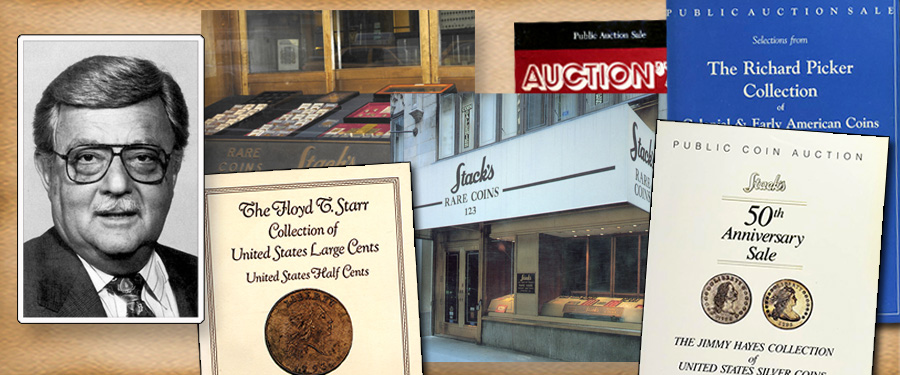
1985 was another
major year for the numismatic hobby, as it changed and adopted some new
guidelines, moved by collector and dealer activity.
First of all, the markets
for precious metals, especially silver, calmed down, recovering from the
speculation precipitated by the Hunt Brothers at the beginning of the decade.
Collectors had come back to the market as silver prices returned to their
pre-speculation prices.
The hobby was
finding more ways to deal with the ongoing problems of counterfeiting and
inconsistent grading. The American Numismatic Association had earlier launched
ANACS, which provided authentication for items as well as grading opinions. In
addition, they had published a set of grading standards that could be used
across numismatics. However, the certificates that ANACS issued to the owners
of the pieces they authenticated and/or graded were in no way “attached” to a
specific coin, and could be used to swindle collectors. The certificates were
created to give buyers a sense of confidence that they were getting what they
paid for, but instead sometimes resulted in the purchase of inferior, doctored
or damaged coins.
In 1985 a group of
coin experts got together to try to build a more dependable way for coins to be
graded. This new company, Professional Coin Grading Services (PCGS), would
begin accepting submissions in 1986, and would be followed not long after by
the Numismatic Guaranty Corporation (NGC). These new companies would change
numismatics forever and move the hobby even more from adjectival to numerical
grading. By encasing coins in plastic holders with information and a grade
imprinted on the sealed slab, they found a way to be sure that the grading
opinion and authenticity guaranty would remain attached to the correct coin.
These services would turn out to be quite efficient and provide collectors with
greater confidence in the items they were purchasing.
On another front,
the stock brokerage house Salomon Brothers got interested in learning more about
various collectible markets. They engaged some expert firms in providing a
market index for collectibles that was published for 11 years, starting in the
early 1980s. Stack’s was asked to develop a portfolio and submit any growth or
drop in value that occurred each year. Norman and I, who were the major partners
during that time, accepted the proposal, and we decided to create a type set
with about 20 coins at its core to use for this purpose. We selected a date and
grade to represent the type, without revealing this information to anyone. We
researched each type and then added up its value at the end of each year,
submitting our results to Salomon Brothers to be included in their annual
index. They thought this would be a valuable and needed service for many of
their clients who had ventured into the tangible markets. Among the items covered
in their index were: Stocks. Bonds, Gold, Silver, Classical Art, Antiques.
Coins, Stamps, and even Chinese Porcelain. It was a pleasant surprise to us and
the coin industry that for eight of the 11 years this index was published, the
coins that Stack’s selected led the growth market. In the other years, coins
were in the top three areas in the index. We felt that the type and rarity of
the pieces we had selected, as well as keeping the contents secret, provided an
accurate growth indication — the information Salomon Brothers wanted to
reflect.
However, due to a revelation
by a staff member at Salomon Brothers, the contents of the portfolio was revealed.
We felt that they had compromised the secrecy of the portfolio and the value
that provided, and we asked to have our yearly contribution to the index
removed. We were concerned that if the contents of the portfolio were known,
certain promoters and dealers might misuse the information and try to
accumulate and hoard those pieces and manipulate the results. Salomon Brothers
agreed that this could happen in the field of rare coins and thanked us for our
contributions. At Stack’s, we felt that this “experiment” showed how
collectible coins could increase in value if they were gathered with care and
knowledge as we had when we built this particular portfolio.





